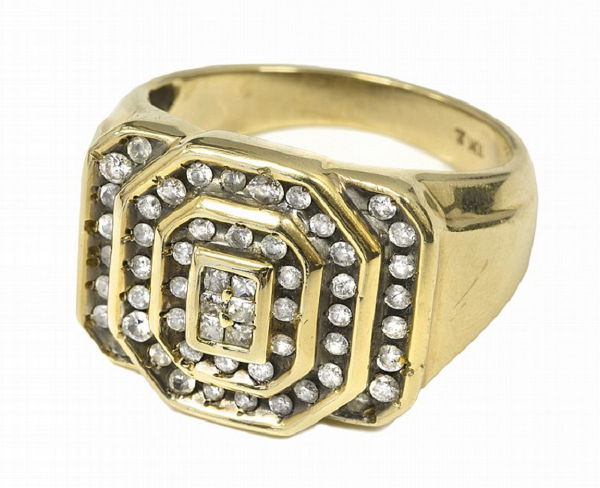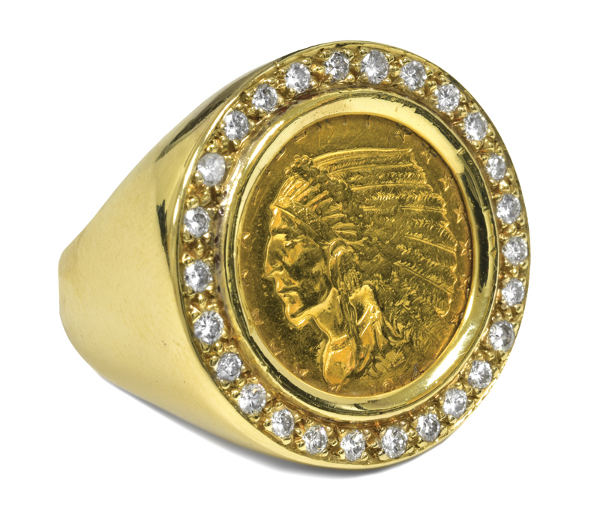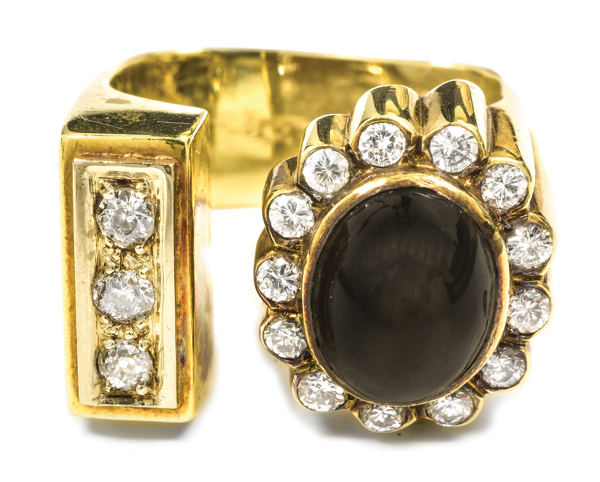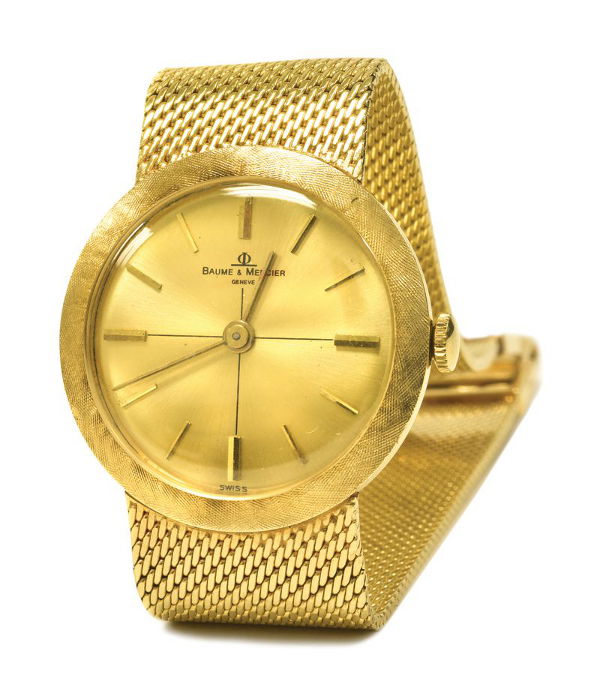Elvis Has Left the Building, But Not all His Jewels!
January 12th, 2016 by Noam Flint
This past Thursday, some of the King of Rock ‘n Roll’s personal jewelry pieces went up on the auction block. Celebrity jewels are famously known for the high prices that they can garner at auction, regardless of whether those same pieces of jewelry would sell for so much if they had never been owned by someone famous.
Auctions for the Fans
Generally, it is the collectors, the world’s biggest fans, of these celebrities that affix such a high worth to these pieces, and will often pay astounding amounts of money to own something that their favorite celebrity once wore.
Amongst the most expensive celerity jewelry collections in the world, the jewelry collection that made the most money at auction was that of Hollywood icon Elizabeth Taylor, whose collection of diamonds and gemstones sold for a total of $137,235,575.
The second highest selling jewelry collection of all time was that of Wallace Simpson, Duchess of Windsor, which sold for $50.3 million. Needless to say, when a famous celebrity’s jewelry goes up for sale, the world sits up and takes notice, expecting extraordinary prices for these pieces.
Considering that Elvis Presley has some of the most loyal and dedicated fan constituencies of all celebrities, the 126 pieces of jewelry that were put up for auction on Thursday were expected to bring in considerable final prices. The jewelry was offered on various online platforms, including invaluables.com and eBay. Among the pieces were many diamonds, sapphires, antique coin rings, and a lot of yellow gold. The jewelry was largely made up of presents that Elvis gave to others, including his band members and a bodyguard, and all were presented with authentication, although the sale was not officially run by the Elvis Presley estate. Currently, Graceland (Elvis’ mansion where he lived and died) and all of its possessions are owned by Lisa Marie Presley, daughter of Elvis and Priscilla. Ultimately, if a large sale of jewelry was ever to be made from Elvis’ private collection (as opposed to Thursday’s which was comprised mostly of gifts to others), it would be in her hands to determine and the total amount of money received would then be able to be compared to the astounding sums that Elizabeth Taylor and the Duchess of Windsor reaped.
Some of the most interesting pieces of jewelry that went up for auction were 4 rings, 2 watches, and a necklace. Unfortunately, the final results were not impressive at all, and in fact the majority of items sold below their low estimates and some even remained unsold at the end of the night.
The first piece of jewelry that we will spotlight is a 10K gold ring set with 56 diamonds. Set within a tiered octagonal design with openwork interior underneath, the men’s pinky ring was estimated to sell at a price between $10,000 – $15,000. The ring was given to Sam Thompson by Elvis. Thompson was Elvis’ bodyguard and the brother of Elvis’ girlfriend Linda Thompson. The ring comes with authentication in the form of a letter from Thompson.

The next ring is a 1914 Indian Head Gold 2 ½ Dollar Coin and Diamond Ring. This ring, which Elvis wore before he gave it away, was actually one of several of his Indian Head rings. The design features twenty-six small round diamonds weighing approximately 1 carat TW which surround the Indian Head side of the coin, and the reverse of the coin with an eagle is visible on the underside of the ring’s setting, and its estimated sell price was between $20,000- $25,000. The ring is authenticated by a letter on Concerts West, Inc. letterhead from Tom Hulett, who together with Colonel Parker, managed Elvis’ live performances in the 1970s. The final price at auction for the ring was $18,000, $2000 below the ring’s lowest estimate. This ring was the highest selling item in the whole auction.

The next ring is one of two that features gemstones. This one is a 14K yellow gold Aztec-style ring. The ring, which was estimated to sell at a price between $10,000 and $15,000, is decorated with Aztec style markings and an extended jaguar’s head. It contains an opaque cabochon green chrysoberyl calcite and the jaguar is set with green tourmaline eyes. This ring is authenticated by 2 letters, one from Sam Thompson (Elvis relationship mentioned above) authenticating that it was given to him by Elvis and one from Robert M. Triplett confirming that he purchased the ring directly from Sam Thompson and the name of the person to whom Robert traded the ring.
The final ring is a diamond and black sapphire ring shaped in the number 10 and set in 14k yellow gold. The number is most apparent when looking at the ring straight on and the ring is estimated to sell at a price between $10,000-$15,000. The 1 on the ring is comprised of 3 diamonds, and the 0 is comprised of a large 2.5 carat black cabochon shaped star sapphire and 13 channel set diamonds. The ring’s authentication comes in the form of a letter from Richard Davis, a prominent employee of Elvis, in which Richard writes: “This 14k gold and diamond ring with black star sapphire belonged to Elvis. He liked the ring because it looked like the number 10 when being worn. When I saw this ring I made a comment on how I liked it so he gave it to me.” The letter comes with five copies of pictures depicting Richard Davis and Elvis over the years.

The following is one very interesting necklace that was up for auction. Apparently, “Taking Care of Business” and a lightning bolt was the unofficial slogan/logo of the Presley operation, and Elvis gifted these necklaces to this employees and personal friends. The necklace features the acronym ‘TCB’ and a lightning bolt, all in 14K yellow gold. This particular necklace also belonged to Sam Thompson, and was made by Elvis’ jeweler Lowell Hays. Although it was estimated to sell at a price between $10,000-$15,000, it was sold for a mere $9,500 – perhaps indicating that the story behind it was not enough to earn it a premium? The ring is authenticated by an affidavit from Thompson and was offered along with copy of Sam’s book “Elvis on Tour: The Last Year,” autographed by Thompson, which includes several photos of Sam wearing his TCB necklace.
The two watches of interest include a 1973 gold Omega TC1 Digital Watch and a gold Baume & Mercier bracelet watch. The Baume & Mercier 14k yellow gold wristwatch was a gift from Elvis to Imperials member Armond Morales. The watch is marked “Baume & Mercier / Geneve / Swiss” on the gold face which has quartz movement and textured weave patterned gold bracelet straps, and was estimated to sell for a price between $10,000-$15,000 (like the majority of the pieces listed above!). Morales’ watch is one among all of the Baume & Mercier personally engraved wristwatches that Elvis gave each member of The Imperials in 1969 when they performed with him in Las Vegas. The watch is authenticated by an official letter from Armond Morales, a picture of Elvis and The Imperials, and the receipt for the purchase of this watch is cataloged in the Graceland Archives collection.

The Omega watch, whose estimate was $4,000-$6,000, is a futuristic style digital watch that was produced by Omega as its TC1 (Time Computer) model. The watch, with 14k gold-filled bezel, quartz movement and 10k gold-filled top caps and deployment clasp, has buttons to set the minute and hour displays are located on the stainless steel back cover plate, and are activated by a magnet housed in a small compartment on the back of the watch’s clasp. It was gifted to musician and friend Charlie Hodge by Elvis and is inscribed on the stainless steel back “To: Charlie From: E.P.” The authentication for this was is a receipt cataloged in the Graceland Archives. Elvis purchased 30 watches for a total of $8,000 from Lowell Hayes, his jeweler, on August 30, 1974, to give as gifts to friends and family. There is also a photo of Elvis in 1974 in which one of his guys can be seen wearing this same watch.
So why didn’t these pieces sell at their lowest estimates? Is it because Elvis is no longer a favorite artist like he used to be? This would explain why people were not paying a premium for his pieces. Maybe it’s because it was not officially sold by the estate? Maybe it’s because his items were listed on several auction platforms? Maybe even the items were not promoted properly like they could have been! A few questions come to mind as a result of some speculation. Why sell an item below the estimated value? With sales of his personal items spanning over time since his death, how many more items are available for sale anymore? Is the estate planning to sell everything at some point? If there aren’t many more items or nothing else is going to be sold, the buyers who bought these pieces are going to look like geniuses if they ever decide to resell.
The top item was sold for $18,000, significantly less than the top item from most celebrities’ famous collections. This is even more surprising considering that each piece was sold along with its unique historical story and connection to the King of Rock ‘n Roll.
Why is it that some items sold for so little or didn’t sell at all?
If they were serious about maximizing the profits from the sales of his personal items, they items should have been auctioned off by much bigger profile players like Christie’s or Sotheby’s. Clearly, these two are the top choice for serious estate sales of famous people, and who can clearly transmit the value in each item. It is important for sellers of big ticket items to understand that although the items can speak for themselves, the sales channel has a major impact on the items’ perception and final price as well, as we can see from the final figures of this auction. However, it is also important to note that these items had more value in them from a historical perspective than the jewels themselves. Only a month ago we saw a great example for that when Sean Connery’s pink diamond sold for more than $4M – twice its original appraisal.
True, none of the diamonds here were substantial, and the majority of the pieces were 14k gold or less. Far from being the big ticket items like the pink and blue diamonds often featured in the auctions (remember the Blue Moon sold for $48 Million only a few weeks ago?). In those instances, the excitement for the item combined with its intrinsic value helps push up the final hammer price significantly.
What do you think? Were these Elvis items undervalued or did they sell for their true worth? Tell us in the comments!
* Images from Graceland Auctions – for more items and more information visit here